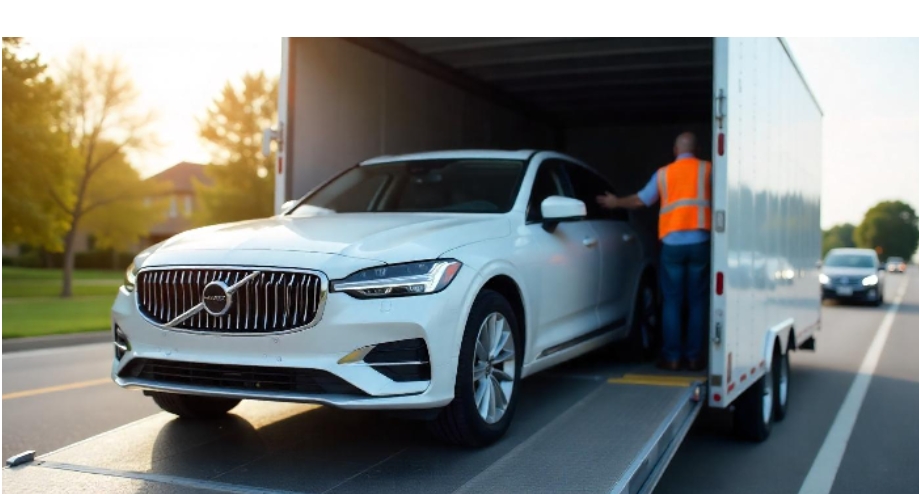With the rise of online marketplaces like eBay Motors, Craigslist, Carvana, Vroom, and Facebook Marketplace, buying a car online has never been easier. But once the deal is done, the next big question arises: how do you get the car delivered to your doorstep, especially if it’s hundreds or thousands of miles away?
What is in this Article
- Secure the Paperwork First: Before arranging shipment, ensure the title, bill of sale, and any required disclosures are correctly completed—especially when dealing with private sellers.
- Choose the Right Transport Option: Whether open or enclosed, door-to-door or terminal-to-terminal, selecting the proper transport method impacts cost and protection during transit.
- Partner with a Reputable Auto Transport Company: Work with licensed, insured, and well-reviewed car shipping companies (like AutoStar Transport Express) to ensure a safe, smooth, and professional delivery experience.
Shipping a car after buying it online requires some planning, but the process can be smooth and stress-free with the right approach. Here’s a step-by-step guide to help you navigate the car shipping process post-purchase.
1. Verify Ownership and Documentation
Before arranging for shipment, ensure the seller has completed all the necessary paperwork:
- Bill of Sale
- Title transfer
- Release of liability
- Odometer disclosure (if applicable)
Most of this will be handled automatically if you’re buying from a platform like Carvana or Vroom. You must double-check everything for private sellers (eBay or Craigslist) before moving forward.
2. Choose a Reliable Auto Transport Company

Image Credit Goes to AutoStar Transport Express
The key to a successful shipment is choosing a trusted car shipping service. Look for:
- Licensed and insured carriers (Check FMCSA registration)
- Positive customer reviews on platforms like BBB, Google, or Trustpilot
- Experience with long-distance or online car purchases
Online marketplaces often partner with transport services, but it’s wise to compare a few options using shipping platforms or quote aggregators like uShip. If you want peace of mind and reliability, choose a company specializing in car transportation from state to state.
3. Decide on the Type of Transport
There are two main options:
- Open transport: Most common and affordable. The vehicle is transported on an open trailer.
- Enclosed transport: Offers more protection from weather and debris—ideal for high-value or classic cars.
Also, choose between:
- Door-to-door delivery: Most convenient—carrier picks up and drops off at your chosen locations.
- Terminal-to-terminal: Usually cheaper but less convenient.
4. Get a Quote and Book the Shipment
Most best car shipping companies offer instant quotes online. Rates vary based on:
- Distance
- Vehicle size and weight
- Transport type
- Location (rural vs. urban)
- Seasonal demand
Once you compare quotes and select a carrier, book the shipment early to secure your spot—especially if you need it moved quickly.
5. Coordinate Pickup with the Seller
If you’re not in the exact location as the car:
- Communicate clearly with the seller or dealership.
Ensure they’re available for pickup and can provide access to the vehicle.
Some platforms (like Carvana) handle delivery for you—check what’s included in your purchase.
6. Prepare the Vehicle for Shipping
Ask the seller (or dealership) to do the following:
- Wash the car (makes inspection easier)
- Remove personal items
- Take photos from all angles
- Ensure tire pressure and battery are in good condition
- Leave only ¼ tank of gas (for safety)
The carrier will inspect the vehicle at pickup and note any damage on a Bill of Lading.
Before you prepare your vehicle, reviewing this step-by-step guide on shipping a car is helpful for a smooth and stress-free transport process.
7. Track Your Shipment
Most modern carriers provide tracking updates via text, email, or an online portal. Stay in touch with the driver or dispatch for real-time updates.
8. Inspect the Car on Arrival
Once the car arrives:
- Scrutinize it with the delivery driver
- Note any damage (compare with pickup photos)
- Sign the Bill of Lading if everything looks good
If you spot any issues, note them immediately and file a claim with the transport company’s insurance if necessary.
9. Register the Vehicle in Your State
You’ll need to register the vehicle at your local DMV. Bring:
- The title and bill of sale
- Proof of insurance
- Valid ID
- Any required inspection paperwork
Each state has its rules—check your DMV’s website for specific requirements.
Final Thoughts
Buying a car online offers convenience and a wider selection—but getting it to your driveway takes some smart logistics. Whether buying a daily driver or a weekend toy, following these steps will ensure your vehicle gets shipped safely and efficiently.
By working with a trusted auto transport company and staying organized, you can enjoy the benefits of online car buying without the hassle of cross-country driving.




